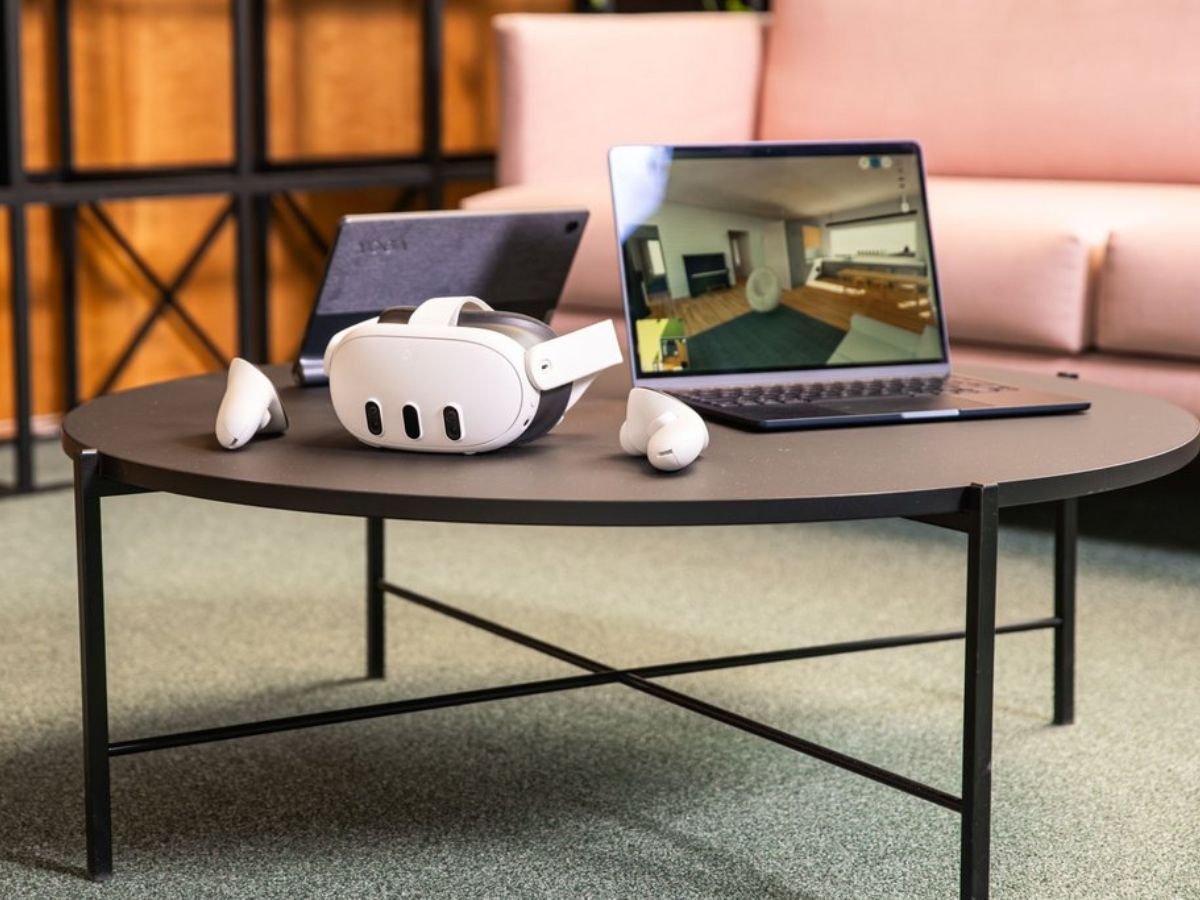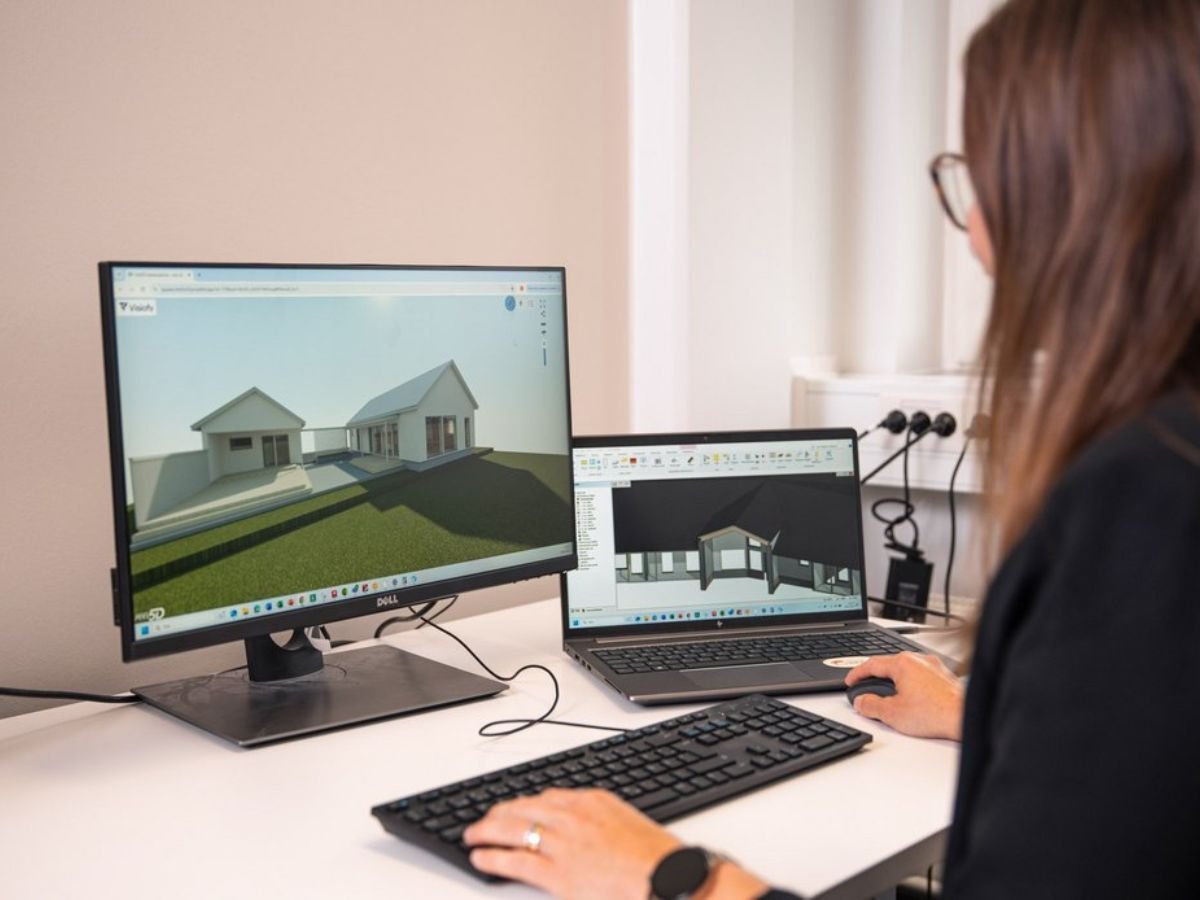
VR Architecture: The Future of Design and Client Communication
Virtual reality (VR) isn’t just for gamers anymore. In the world of architecture, it’s changing how professionals design, present, and sell their work. With the rise of browser-based and headset-compatible VR tools, even small studios and builders can offer immersive, walkable experiences that used to be reserved for high-end firms. In this guide, we’ll walk through everything you need to know about VR architecture — what it is, how it works, why it matters, and how you can start using it today.
What Is VR Architecture?
VR architecture refers to the use of virtual reality technology to visualize and interact with building designs in a simulated 3D environment. It transforms floor plans and 3D models into immersive experiences that users can explore at full scale.
Unlike static renders or 360-degree tours, VR architecture:
-
Allows full freedom of movement
-
Works with 1:1 spatial dimensions
-
Can be accessed via web browsers, tablets, or VR headsets.
Pro tip
With tools like Visiofy, you don’t need advanced technical skills to start presenting in VR— just upload your 3D model and share a link.
Why Architects Are Embracing VR
Virtual walkthroughs solve some of the biggest challenges in architectural communication:
Problem: Clients don’t fully understand scale and depth from floor plans and renders
Solution: VR lets them walk through the space before construction starts.
Problem: Long sales cycles and hesitation
Solution: Immersive previews build confidence and accelerate decisions.
Problem: Rework and misalignment
Solution: Seeing the space in VR reduces misunderstandings early on.
How VR Architecture Works
You don’t need to reinvent your workflow to adopt VR.
Here’s the typical pipeline:
-
Design in your preferred software: SketchUp, Archicad, Revit, Chief Architect, etc.
-
Export the model: Common formats are
.glb,.obj, or.dae -
Upload to a VR platform: Tools like Visiofy convert your model into a walkable space
-
Share and view: Use a link, embed, or QR code for desktop, mobile, or headset navigation
🔗 CAD to VR: The Complete Guide
🔗 SketchUp to VR: A Step-by-Step Guide
🔗 Archicad to VR: A Step-by-Step Guide
VR in the Design Process
Architecture isn’t just about what a space looks like — it’s about how it feels. VR helps you:
-
Review spatial proportions at scale
-
Test navigation and flow through rooms and circulation zones
-
Improve team collaboration by experiencing the same model together
-
Identify design flaws early in the process
Even if you're still designing, previewing in VR helps guide your thinking.
VR in Client Presentations
This is where VR shines. Instead of flipping through static PDFs or videos, you can offer clients:
-
A walkthrough they can explore on their phone
-
A guided experience in a headset during in-person meetings
-
A link they can share with family or neighbors
Clients leave the meeting not wondering what their home will be — but knowing what it feels like.
VR in Portfolios & Marketing
Want to stand out from other firms?
-
Embed your VR models on your portfolio website
-
Use them in architectural competitions
-
Add a QR code to your PDF or printed portfolio
-
Show immersive tours at trade shows or open houses
It doesn’t just impress — it communicates your professionalism, innovation, and attention to spatial quality.
🔗 Best Platforms to Build and Share an Architecture Portfolio
🔗 Graphic Design Tips for Architectural Portfolios
🔗 The Ultimate Guide to Creating a Stunning Architecture Portfolio
Do You Need a Headset?
Not necessarily. While headsets like Meta Quest enhance immersion and offer the best experience, VR architecture tools like Visiofy are fully functional on desktop and mobile.
But if you do have a headset or would like to get one:
-
Just open the model link in your headset browser
-
Tap the "Enter VR" icon
-
Walk freely in your design at full scale
🔗 How to Present a Visiofy Tour to Clients Using a VR Headset
Real-World Examples
-
Architects use VR to preview designs plans for residential homes
-
Home builders show walkable tours of model homes before they’re built
-
Students present immersive critiques without physical models
-
Buyers revisit virtual spaces between meetings to finalize decisions
How Visiofy Supports VR Architecture
Visiofy is a lightweight, browser-based VR tool that brings your designs to life without requiring code, rendering software, or plugins.
You can:
-
Upload models in minutes
-
Share walkable tours by link or embed
-
Offer both desktop and VR headset viewing
-
Keep clients engaged throughout the project timeline
Try it out: Signup is free and lets you create three virtual walkthroughs
🔗 Getting Started with Visiofy: A Beginner's Guide
🔗 Sign up for the Free Tier
🔗 Book a Demo
Related Reads
-
The Home Buyer’s Journey – What the Future Homeowner Experiences
- How to Record your Screen in VR
- How to Present your Visiofy Model to a Client in VR
- How to Open a Shared Visiofy Link in a VR Headset
- How to Use the Controllers on a Meta Quest 3 Headset
- What is a 3D Virtual Tour of a Home?
- 3D Virtual Home Tours: The Guide
FAQ: VR in Architecture
What is VR architecture?
VR architecture utilizes virtual reality technology to create immersive, interactive 3D models of architectural designs. This allows architects, clients, and other stakeholders to explore and experience buildings before they are built, enhancing design visualization, collaboration, and decision-making.
How can VR be used in architecture?
Virtual reality is used in architectural design to allow clients, designers, architects, and engineers to visualize the design concept and walk through it before construction. VR and 3D modeling are superior ways to facilitate communication between stakeholders and to align expectations and reality.


